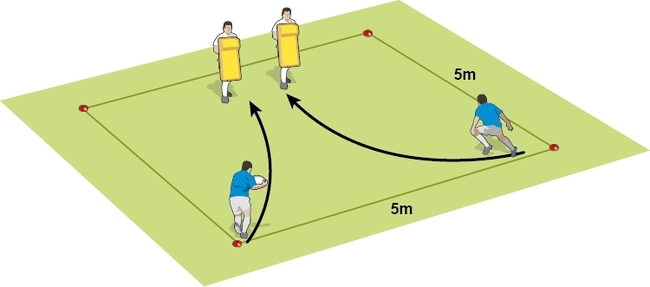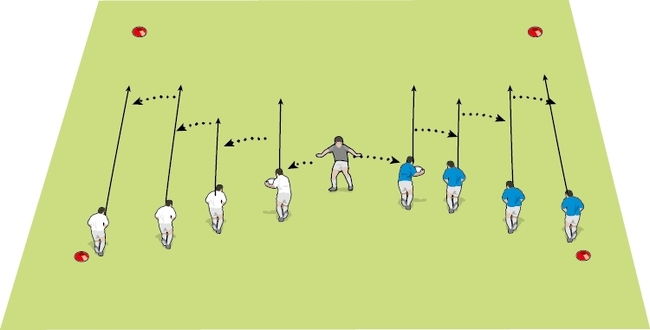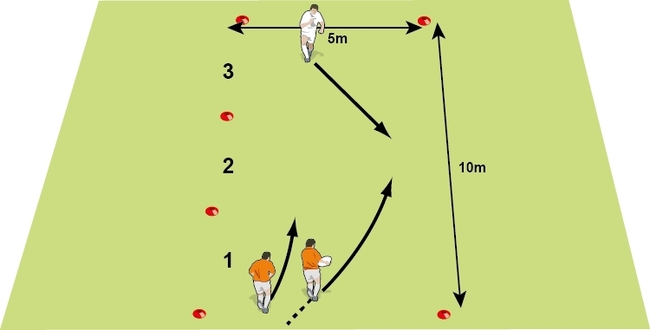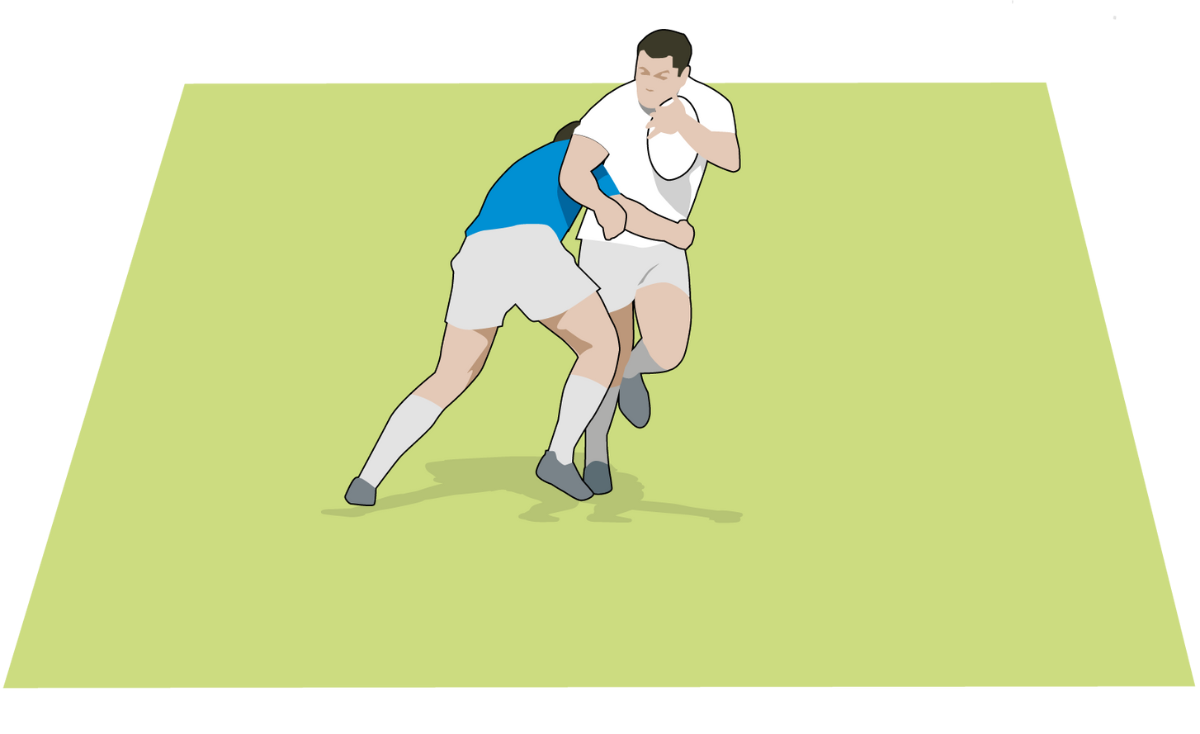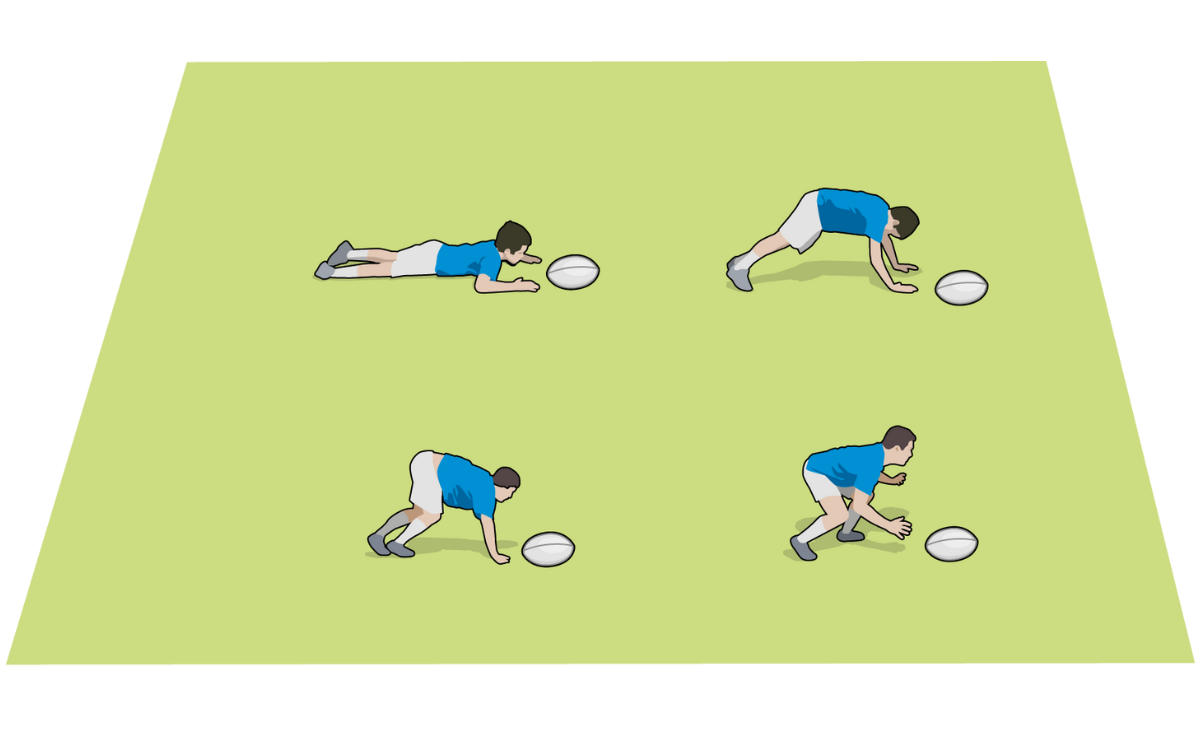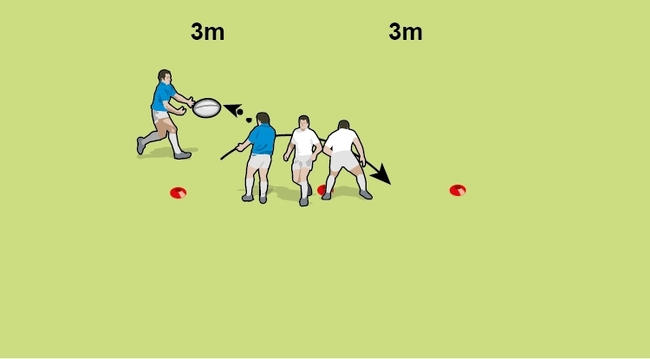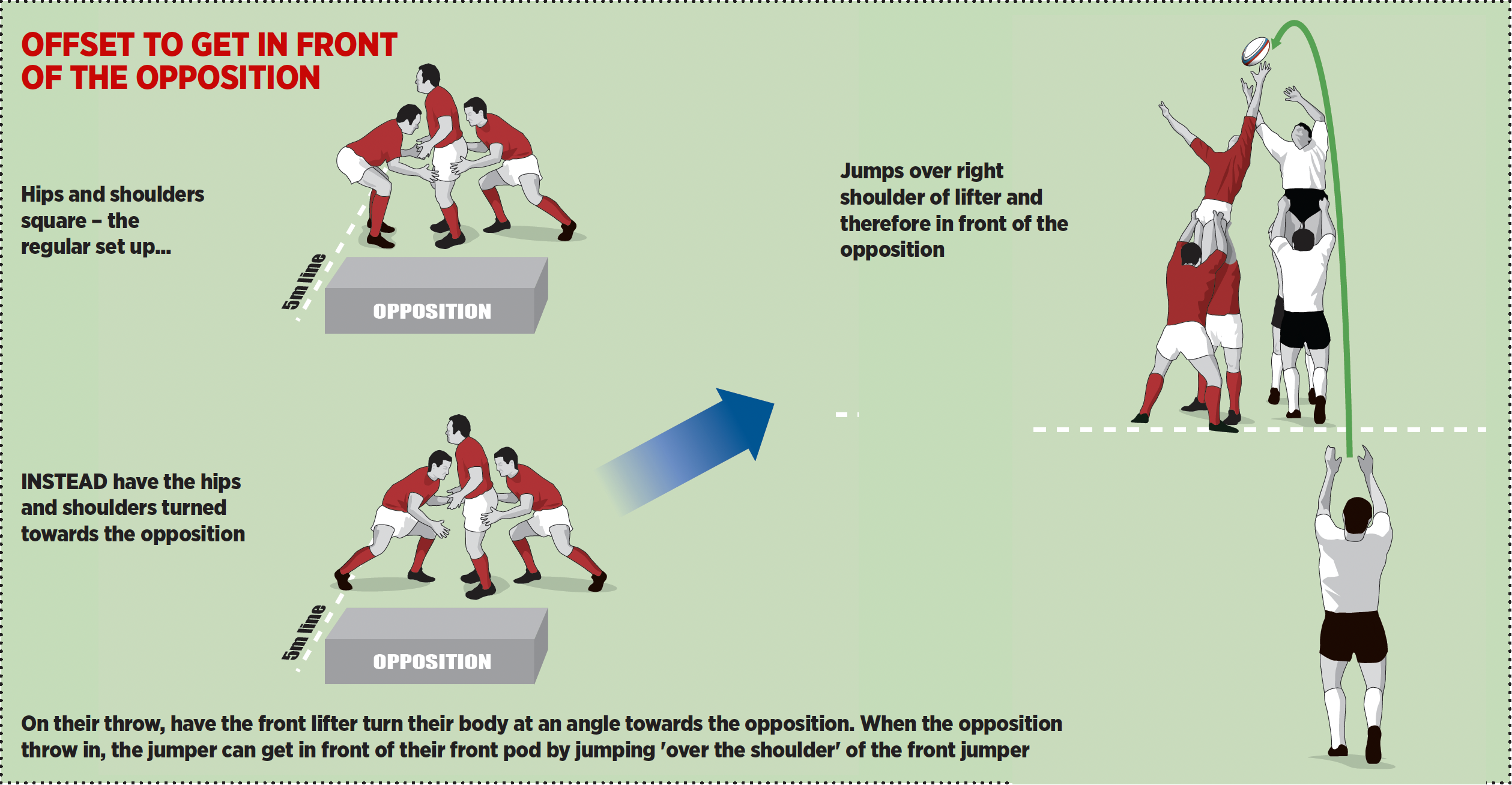Attacking footwork
Create better ‘go-forward’ for players taking the ball close to the ruck and the tackle line. This also works on improved ball placement and support options.
WHY USE IT
Isolate one defender, then attack another, and maintain momentum before presenting the ball, so the defence has less time to ‘jackle’ (go for the ball).
set up
Four ruck pads, a ball and a 30m by 20m pitch.
HOW TO PLAY
ACTIVITY: Two pairs of ruck pad-holders start about 5m apart. Each pair is slightly offset, as in the top illustration. Another pair of players start in front of the first set of pad-holders, with a further pair to the side. They have a ball. It is fed to a player who moves toward the first pad, but then changes the angle to attack the next pad. When making contact with that pad, they go to ground and present the ball. The nearest player clears the pad. Once happy with the outcome, these players get back to their feet, and pass to the next group, who repeat. The other ruck pad-holders get back up and realign, so the process can be repeated.
GAME: Put four ruck pad-holders and five attackers inside the box. The attackers have five ‘tackles’ (a glancing blow by a ruck pad) to score a try. However, if the attacker meets a ruck pad full-square, the game finishes. On a tackle, the attacker goes to ground to present the ball.
COACHING POINTS
- Attack hard, change angle early to maintain momentum.
- Fall away from the original pass.
Thank you for reading
to enjoy 3 free articles,
our weekly newsletter, and a free coaching e-book
Or if you are already a subscriber, login for full access
Newsletter Sign Up
Coaches Testimonials

Gerald Kearney, Downtown Las Vegas Soccer Club

Paul Butler, Florida, USA

Rick Shields, Springboro, USA

Tony Green, Pierrefonds Titans, Quebec, Canada
Subscribe Today
Be a more effective, more successful rugby coach
In a recent survey 89% of subscribers said Rugby Coach Weekly makes them more confident, 91% said Rugby Coach Weekly makes them a more effective coach and 93% said Rugby Coach Weekly makes them more inspired.
Get Weekly Inspiration
All the latest techniques and approaches
Rugby Coach Weekly offers proven and easy to use rugby drills, coaching sessions, practice plans, small-sided games, warm-ups, training tips and advice.
We've been at the cutting edge of rugby coaching since we launched in 2005, creating resources for the grassroots youth coach, following best practice from around the world and insights from the professional game.




